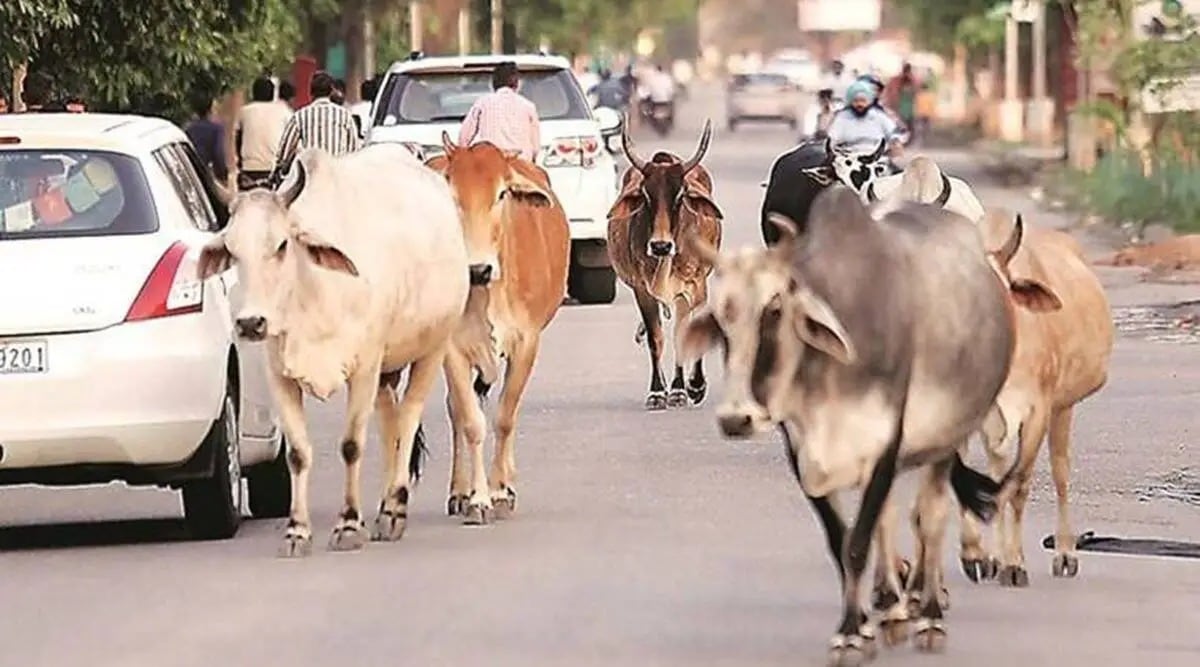 The analysis suggests genomes from the 2022 outbreak harbour a large number of genetic variants and form a distinct lineage, researchers said. (Representational)
The analysis suggests genomes from the 2022 outbreak harbour a large number of genetic variants and form a distinct lineage, researchers said. (Representational)Researchers from the Council of Scientific and Industrial Research-Institute of Genomic and Integrative Biology (CSIR-IGIB) along with officials of the animal husbandry department in Rajasthan recently undertook genome sequencing of the lumpy skin disease virus (LSDV). The findings of the study have been published in BioRxiv preprint.
Notably, the country is currently grappling with an outbreak of the disease, which has already spanned over seven states.
The researchers completed genome sequences of six viral isolates of the LSDV from affected cattle. The analysis suggests genomes from the 2022 outbreak harbour a large number of genetic variants and form a distinct lineage, researchers said.
“Genomic findings highlight the requirement for large-scale genomic surveillance and close monitoring to track the spread of the virus in cattle for building better diagnosis in future,” Dr Sridhar Sivasubbu, lead researcher of the study and senior principal scientist at CSIR-IGIB, told indianexpress.com.
Dr Vinod Scaria, principal scientist at CSIR-IGIB and one of the authors of the study, noted that poxviruses are highly specific for the host and hence the risk for human infection was low.
Lumpy Skin Disease (LSD) is a virus disease of cattle, with significant morbidity and mortality. The disease is characterised by nodular skin lesions evident with severe cases resulting in the death of the affected animal. The morbidity rate in LSD varies widely from 50-100 per cent. Though previously confined to regions within Africa, LSDV infections have caused large outbreaks in several regions of the world in recent years. In 2019, an outbreak of the disease was reported from India with low rates of morbidity and no reported mortality. Whereas the ongoing outbreak of LSDV across seven states has resulted in a reported mortality of over 80,000 cattle.
Data from the Department of Animal Husbandry and Dairy put India’s cattle population at a little over 190 million in 2019. Researchers noted that controlling LSDV infections is of significant importance to prevent the socio-economic impacts of the disease in the country.
CSIR-IGIB researchers collected samples from five affected animals, which had symptoms suggestive of Lumpy Skin Disease during the ongoing outbreak of the disease in Rajasthan. Nasal swabs or skin scabs or both were collected by trained veterinary professionals. A total of eight viral isolates collected from five affected animals were processed for genome sequencing.
According to the report, a total of 177 unique variants were detected across the six isolates. “As the virus continues to spread and evolve, genomic characterization of LSDV is thus useful for understanding the epidemiology and evolution of the virus. Analysis of the six viral isolates shows that the genomes from the 2022 outbreak of the disease contain a large number of genetic variants as compared to previous genomes available in the public domain. The presence of an additional variant (LSDVgp037:D286V) in the virus isolated from skin scab as compared to nasal swab of the one host animal is suggestive of potential intra-host evolution of LSDV,” researchers said.
25 lakh vaccine doses expected by September 20: Maharashtra animal husbandry commissioner
Maharashtra animal husbandry commissioner Sachindra Pratap Singh said the spread of Lumpy Skin Disease was noticed in 839 villages across 25 districts including Pune till September 18. There are around 7,356 infected livestock and a total of 2,730 livestock recovered after treatment. A total of 48.93 lakh vaccine doses have been made available in the various districts of the state. Vaccination has been carried out in 17.76 lakh animals within 5 km radius of the infected areas of 963 villages, he said, adding that vaccination will be carried out in gaushalas and larger dairies. The state will receive another 25 lakh doses on September 20, the minister further said. A total of 187 infected animals have died including 64 in Jalgaon district, 24 in Ahmednagar district, seven in Dhule, 28 in Akola, 17 in Pune, three in Latur, nine in Satara, 10 in Buldhana, 13 in Amravati, seven in Kolhapur, and one each in Sangli, Washim, Jalna, Thane and Nagpur districts.